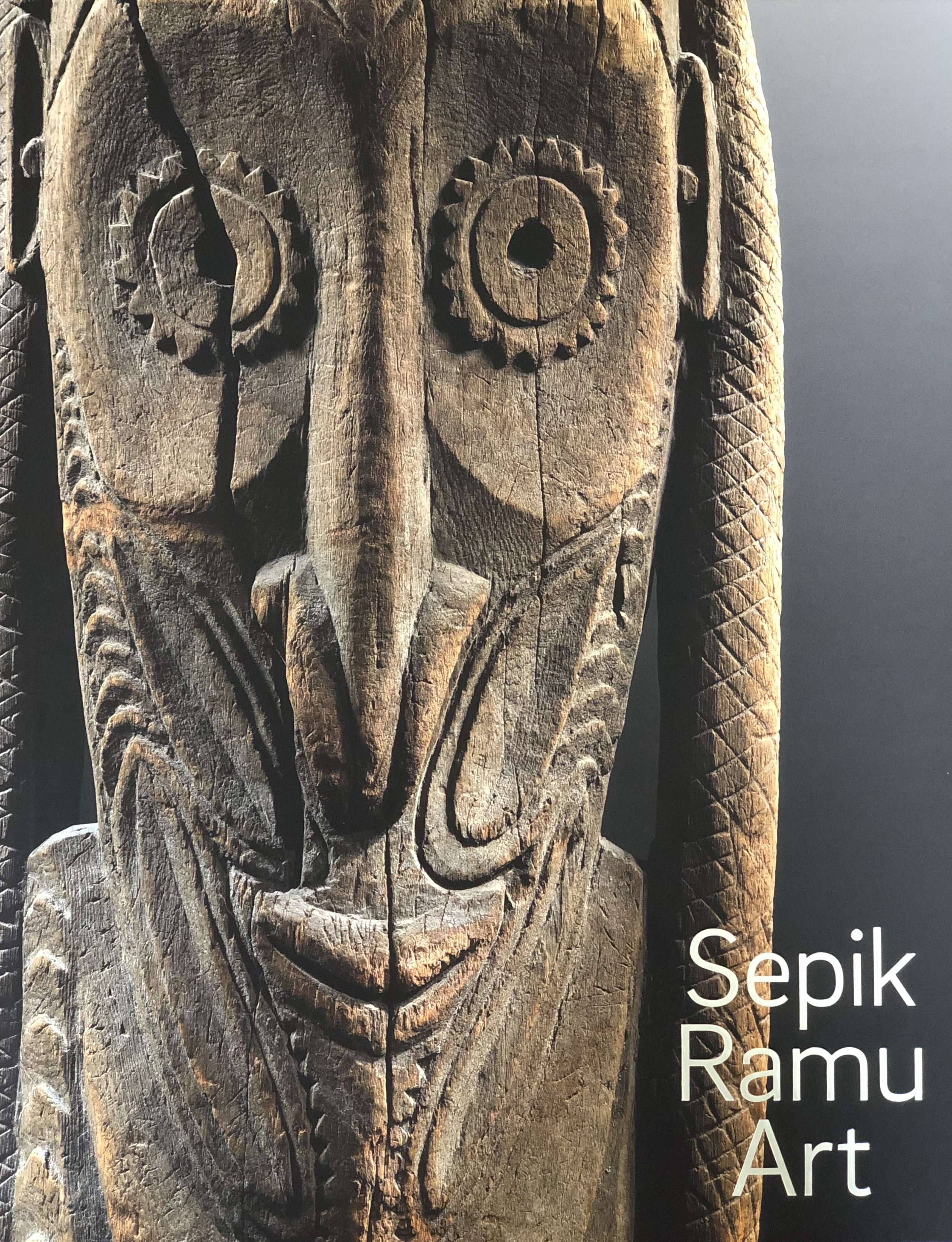Resource Spotlight | “Sepik Ramu Art” Edited by Kevin Conru | Ancestral Visions: Papua New Guinea Art from the Sepik Ramu at Lempertz 1798
SEPIK RAMU ART
Edited by Kevin Conru
Once a vast inland sea, the flood plain of the Sepik and Ramu river systems in Papua New Guinea remains one of the most pristine on the planet. The people of the Sepik -Ramu area, representing a large part of the over 700 different linguistic groups that live on the earth’s second-largest island, have in that tranquil environment created an outstanding œuvre of art that is a truly important part of humanity’s cultural heritage.
All facets of their lives, both secular and spiritual, were imbued with creativity that knew no bounds. Magnificent house structures were embellished with totemic carvings of wood and fibre, masks and statues were made to intercede with the ancestral worlds, and objects of everyday mundanity were decorated with highly imaginative visual patterning. They guarded their sacred objects for generations, until the arrival of Christianity and external trade, and so what has been passed down and is now presented in this book represents some of the most profound art creations known to us.
This volume, edited by Kevin Conru, presents many previously unpublished masterpieces coming from historical Low Country collections, and the nearly 200 pieces selected are representative of the enormous scope of art made in the region. A survey of early photography from the Sepik-Ramu is presented by Virginia -Lee Webb, and a discussion of masks and figures from the lower reaches of the two rivers is undertaken by Crispin Howarth. Barry Craig, who first undertook fieldwork in Papua New Guinea in 1964, has narrated the progression of illustrations as one who has studied the wider Sepik-Ramu region both in depth and in situ. And all the artworks presented have been lavishly photographed by Hughes Dubois.
Introduction by Kevin Conru
Specialist in Oceanic Art | Author
Virginia-Lee Webb
Ph.D., AAA | Former Research Curator at The Metropolitan Museum of Art
Layers of Light : Twentieth -Century Photographs of Sculpture, Architecture, and the People of the Sepik River
Crispin Howarth
Curator of Pacific Art at The National Gallery of Australia
Brag Masks and Kandimbong Figures : Two Sculptural Arts of the Sepik-Ramu Delta
Barry Craig
Ph.D. | Author
New Bends for an Old River
296 pages illustrating 170 objects from three private collections
Photographs by Hughes Dubois
Conru Editions | Released in May 2019
ANCESTRAL VISIONS
Papua New Guinea Art from Sepik Ramu
May 24, 2019 — June 28, 2019
Lempertz is delighted to host this exhibition to mark the launch of a new book, Sepik Ramu Art, edited by Kevin Conru with contributions from three eminent scholars, Virginia-Lee Webb, Crispin Howarth and Barry Craig. The book will feature about 200 works, drawn from three renowned European private collections, each superbly photographed by Hughes Dubois. From these objects Lempertz and Kevin Conru have selected 96 which will be exhibited at Lempertz’ gallery on the Rue du Grand Cerf (Grotehertstraat) in Brussels from 24 May - 28 June.
The Sepik River flows largely west to east along its serpentine course of more than 1,000 kilometres and the Ramu River flows 650 kilometres south to north, both emptying into the Bismarck Sea. The vast catchment area of the two rivers is home to numerous groups such as the Iatmul, Boiken, and Abelam, and at one time more that 200 languages were spoken in the region. The exhibition will attempt to reflect the broad diversity of art works from the area, from small body ornaments to a large house post and skull rack; from small masks and figures used as personal charms to large gable masks, shields, malu boards, headrests, food hooks and over-modelled skulls. The exhibition does not set out to be a comprehensive ethnographic survey but rather is a celebration of the very best artistic achievements of the carvers and other artists of this area.
As might be expected with loans from such important collections, many of the works date from the earliest period of contact with the west and the list of provenances features many of the greatest names of museums, dealers, collectors and anthropologists. Some of the artefacts were formerly in the Linden Museum, Stuttgart; the Reiss Museum in Mannheim; the Ethnologisches Museum, Berlin; the Rautenstrauch Joest Museum, Cologne; and the Liverpool Museum. Amongst the great dealers whose names feature are Arthur Speyer, Berlin; Leendert Van Lier, Blaricum; Philip Goldman, London; Matthias Lemaire, Amsterdam; Charles Ratton, Paris; and Julius Konietzko, Hamburg. Great collectors from the past include Ernst Heinrich, Bad Cannstatt; Cornelius Meulendijk and Carel Groenevelt, Rotterdam; James Hooper, Arundel; and Walter Bondy, Paris.
Click below to watch an interview with Crispin Howarth from the National Gallery of Australia and Kevin Conru, Curator of the exhibition and author of the eponymous book.
Video courtesy of Tribal Art Magazine.
Exhibition Preview
Disclaimer: This is not a sponsored post. Art of the Ancestors does not receive a commission should any of our readers purchase the aforementioned book.
Art of the Ancestors is a strictly non-commercial educational platform and has no vested interest in the professional activities of the individuals or businesses listed above. Their opinions are their own.



